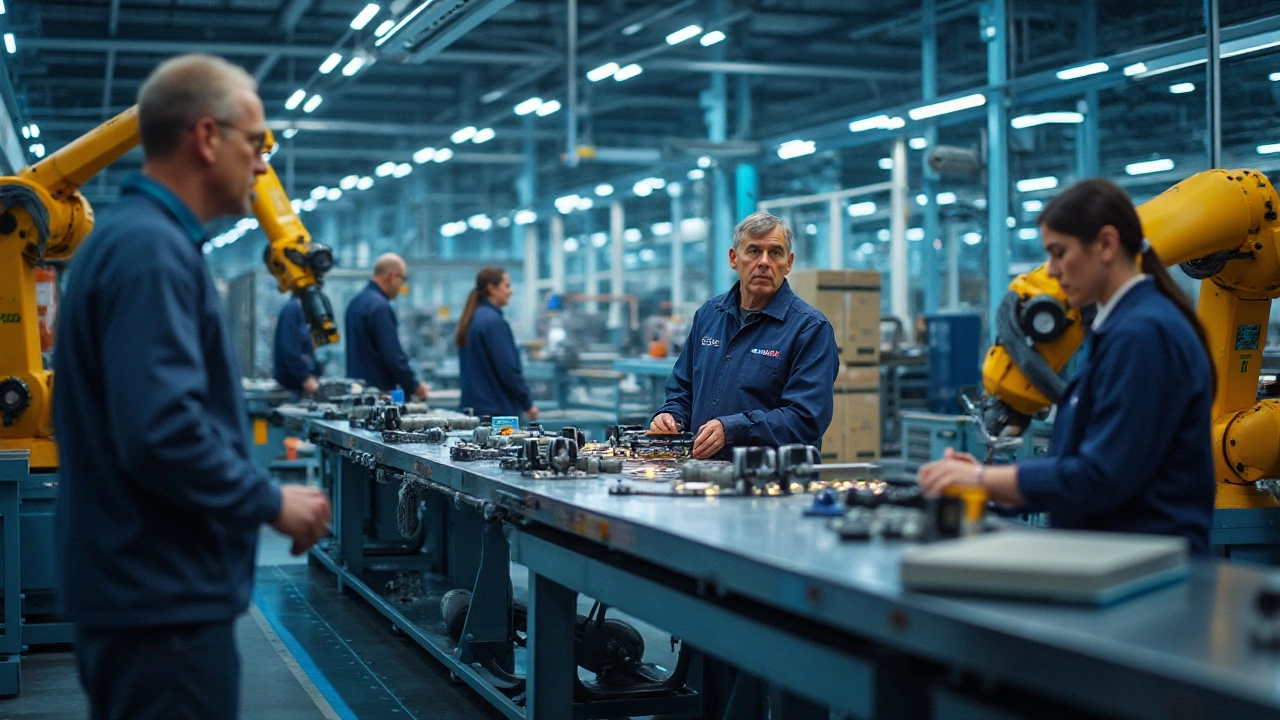Kitchen Appliance Guide: Sustainable, Smart & Practical Choices
When you think about a kitchen appliance, any device that helps you store, prepare, or clean food in the home kitchen. It’s also called a cooking gadget. In modern homes you’ll also encounter a smart kitchen device, an appliance with internet connectivity that can be controlled via apps or voice assistants, an energy‑efficient appliance, any appliance designed to use less electricity or gas while delivering the same performance, and a classic food processor, a multi‑function tool for chopping, grinding, and mixing ingredients. These devices together shape how we cook, save time, and manage utility bills.
Why Energy Efficiency Matters in Every Kitchen
India’s climate and power costs push many households toward energy‑efficient appliances. A refrigerator with a high star rating can cut electricity use by up to 30 % compared with older models, directly lowering monthly bills. Similarly, induction cooktops heat faster and waste less heat than gas burners, which means quicker meals and a smaller carbon footprint. When you combine an efficient fridge, an induction stove, and a low‑power dishwasher, the overall kitchen load drops significantly, making it easier to stay within local utility limits during peak summer months.
Smart kitchen devices add another layer of control. A Wi‑Fi‑enabled oven can be preheated from your phone, so you never waste energy heating an empty chamber. Voice‑controlled lights and smart plugs let you turn off standby power with a simple command. These gadgets often include usage statistics, helping you spot the appliances that burn the most electricity and adjust habits accordingly.
Beyond the bills, sustainable choices support the broader push for greener manufacturing. Companies that produce high‑efficiency refrigerators or appliances using recycled plastics are gaining market share in India. Buying such products not only saves you money but also encourages manufacturers to keep improving material sourcing and energy standards.
When planning a kitchen upgrade, start with the core categories: refrigerators, ovens, cooktops, dishwashers, and small processors. Each serves a distinct role. A fridge stores perishable food, an oven bakes and roasts, a cooktop heats pots, a dishwasher cleans after meals, and a food processor speeds up prep work. Understanding how these pieces interact helps you create a workflow that minimizes movement and reduces cooking time.
Indian cooking often involves high‑heat stir‑frying, long‑duration slow cooking, and frequent use of fresh produce. That means a sturdy, high‑performance gas stove or induction cooktop is essential. At the same time, many households rely on deep‑freezers to store seasonal vegetables and grains, so a reliable freezer compartment in a fridge is a must‑have. Pairing these with a versatile food processor—one that can handle everything from grinding spices to making smooth batters—covers most traditional recipes without extra tools.
Maintenance is another hidden cost. Regularly cleaning condenser coils on a fridge, descaling an induction plate, and clearing filter screens on a dishwasher keep appliances running efficiently and extend their lifespan. Most manufacturers recommend a deep clean every six months; following that schedule can prevent performance drops that would otherwise increase energy use.
When you shop, weigh upfront price against long‑term savings. A premium, high‑star rating fridge may cost more initially but pay for itself in reduced electricity bills within a few years. Look for government subsidies or rebates for energy‑saving models—many state programs in India offer cash back for appliances with a minimum star rating. Also, read user reviews for reliability; a cheap model that breaks down quickly adds hidden repair costs.
Below you’ll find a curated collection of articles that dive deeper into these topics. From expert watering tips for container gardens to the latest plastic trends in 2025, the list includes practical guides, market insights, and hands‑on advice that will help you make smarter choices for your kitchen and beyond.
Understanding the Key Drawbacks of Using a Food Processor
Food processors are invaluable tools in modern kitchens, simplifying tasks like chopping, slicing, and pureeing. However, they are not without their downsides. This article explores the primary disadvantage of food processors, covering issues such as bulkiness, limited control over blending, potential over-processing, and cleaning difficulties. By understanding these drawbacks, users can make informed decisions about their kitchen equipment choices.
- manufacturing
- India
- food processing
- garden tips
- rice cultivation
- government schemes
- balcony garden
- urban gardening
- balcony gardening
- profitable business
- business ideas
- plastic manufacturing
- drip irrigation
- plant care
- steel manufacturing
- sustainable gardening
- startup ideas
- steel industry
- flower gardening
- textile manufacturers






